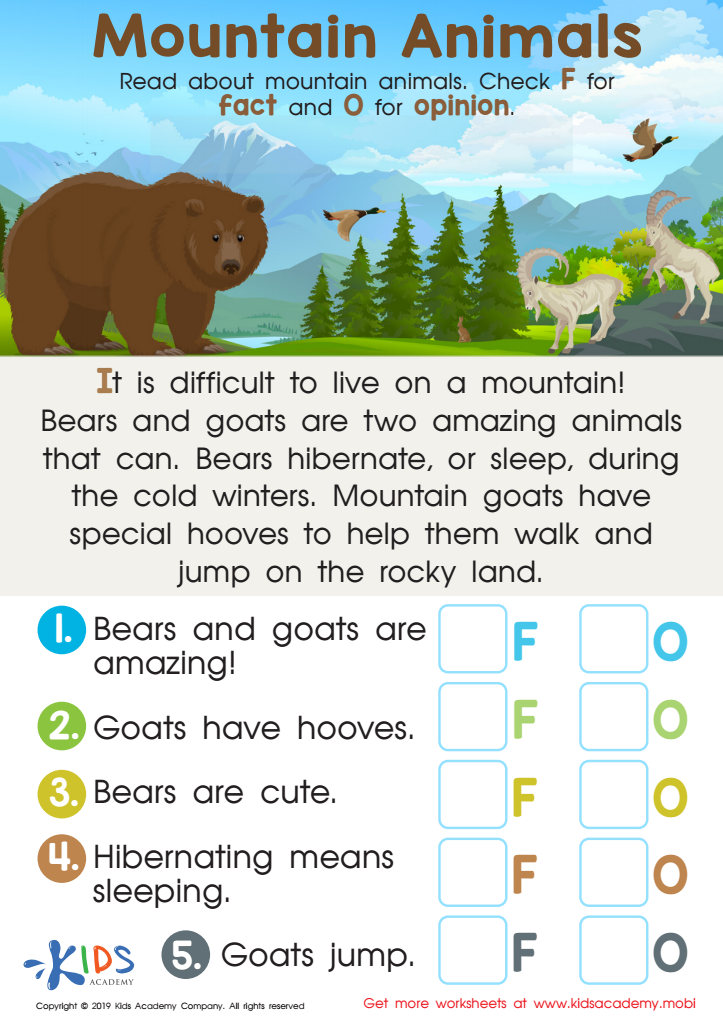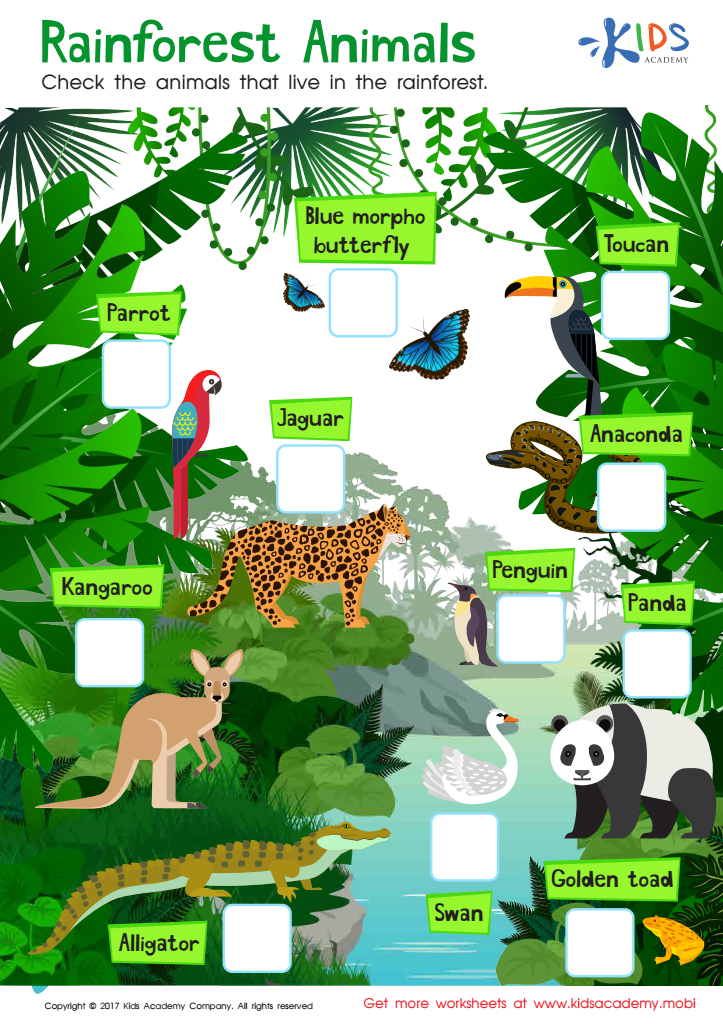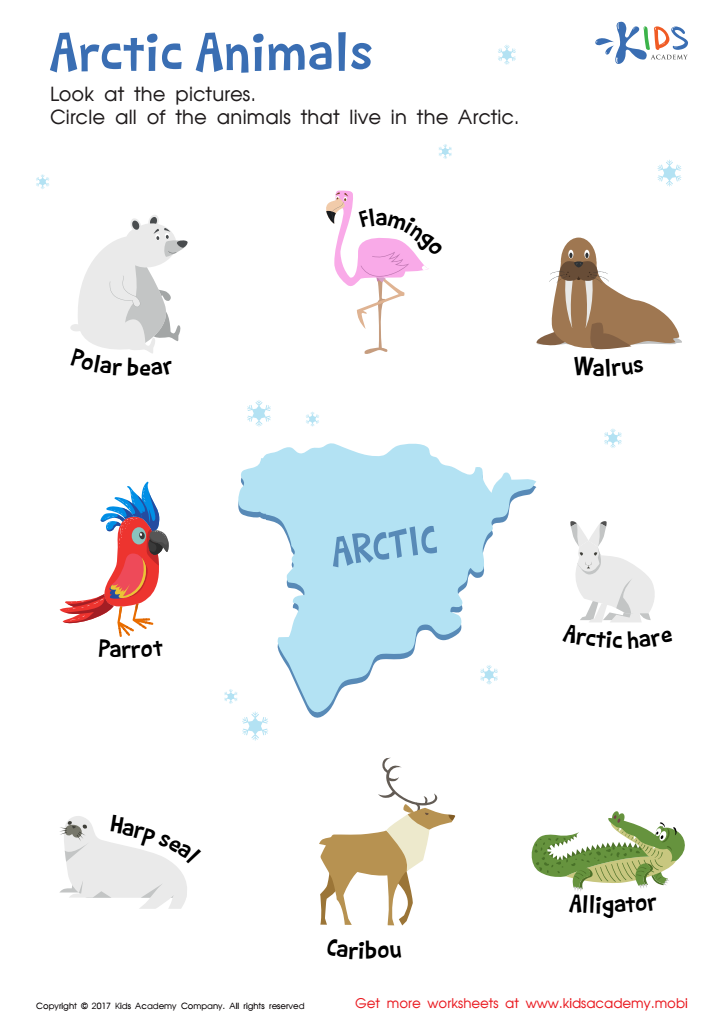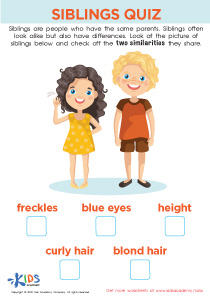Animal identification Normal Plants and Animals Worksheets for Ages 5-9
3 filtered results
-
From - To
Explore our engaging "Animal Identification Normal Plants and Animals Worksheets" designed for kids ages 5-9. These expertly crafted worksheets help young learners enhance their science skills by identifying various animals and understanding their natural habitats and characteristics. Through colorful illustrations and fun activities, children will foster a love for nature, improve observation skills, and build foundational knowledge in biology. Perfect for teachers and parents alike, our worksheets are a valuable resource for introducing essential concepts in an enjoyable and interactive manner. Ignite your child’s curiosity with our top-notch educational materials today!


Mountain Animals Worksheet


Rainforest Animals Worksheet


Arctic Animals Worksheet
Understanding animal identification and familiarizing children with normal plants and animals is crucial for several reasons. For young children aged 5-9, this knowledge nurtures curiosity and appreciation for the natural world, fostering a sense of wonder and connection to their environment. It also serves as the foundation for scientific thinking, enhancing observational skills, critical thinking, and the ability to classify and categorize different species, which are fundamental to scientific studies.
Parents and teachers play an essential role in instilling these values early on. By introducing children to the basics of animal and plant identification, they can cultivate environmental stewardship, encouraging the next generation to protect and respect biodiversity. This awareness is particularly relevant in today’s world, where many species face threats from habitat destruction, climate change, and pollution.
Furthermore, learning about different animals and plants can significantly contribute to a child's emotional and social development. Interacting with nature is known to reduce stress, increase attention span, and improve mood, making it a valuable activity for overall well-being. Group activities related to nature help improve social skills, teamwork, and communication among peers.
In essence, early education in animal and plant identification shapes a child’s academic abilities, environmental ethics, and personal development, creating well-rounded, nature-aware individuals.

 Assign to My Students
Assign to My Students















